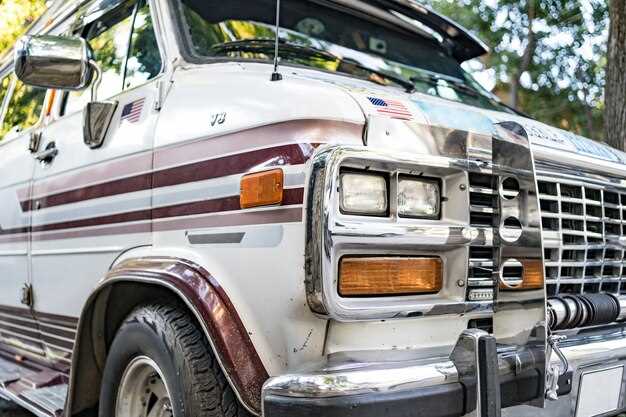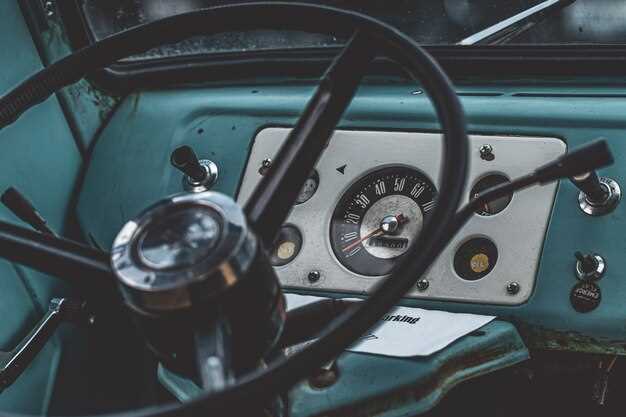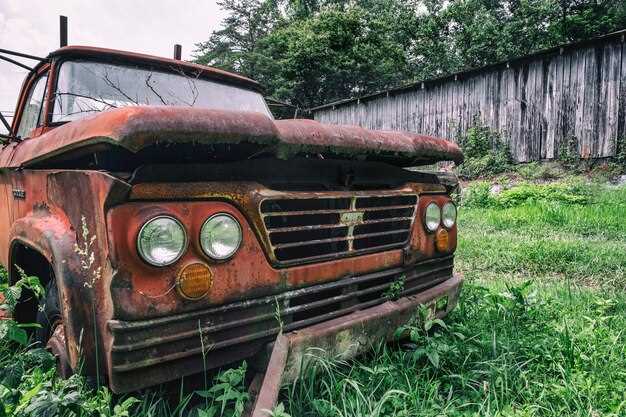
The evolution of classic trucks in the United States is not merely a tale of changing designs; it is a reflection of the nation’s cultural and technological advancements. From their inception in the early 20th century, trucks have been indispensable to American life, serving critical roles in agriculture, commerce, and transportation. However, as societal needs shift, so too have the designs and functionalities of these vehicles.
In recent years, the revival of classic trucks has gained momentum, as enthusiasts and collectors seek to restore and customize models that once defined American engineering. The transformation of these vehicles often incorporates modern technology while preserving the essence of their original charm. This intricate balance of nostalgia and innovation is at the heart of the classic truck movement, attracting a new generation of drivers who appreciate both the aesthetic and performance aspects.
As the automotive landscape continues to evolve with the introduction of electric vehicles and advanced safety features, understanding the transformation of classic trucks offers insight into broader trends within the automotive industry. The blend of tradition and modernity not only rejuvenates classic models but also fuels a growing community that champions sustainable practices in vehicle restoration and customization.
Modern Upgrades: Enhancements in Performance and Comfort
Modern classic trucks have undergone significant transformations, particularly in performance and comfort, making them more appealing to a contemporary audience. Many manufacturers have embraced advanced technologies and engineering solutions to enhance the driving experience.
One of the most notable upgrades is the incorporation of more powerful and efficient engines. Modern classic trucks often feature turbocharged engines and hybrid systems, providing better fuel efficiency without sacrificing power. These advancements not only improve reliability but also reduce the environmental impact of traditional trucks.
Moreover, modern suspension systems have been refined to offer a smoother ride. Independent front and rear suspensions replace older solid axle designs, allowing for improved handling, stability, and comfort on various terrains. This upgrade significantly enhances the driving experience, especially for those who use their trucks for both work and leisure.
Technological innovations have also transformed the interior of classic trucks. Advanced infotainment systems with touchscreen displays, smartphone integration, and premium audio systems are now commonly found. Comfort features such as heated and ventilated seats, climate control systems, and improved cabin insulation have elevated the standard for interior quality, making long drives more enjoyable.
Safety has become a critical focus as well. Modern classic trucks are often equipped with cutting-edge safety features such as adaptive cruise control, lane departure warnings, and advanced airbag systems. These enhancements not only protect occupants but also provide peace of mind for those driving in diverse conditions.
In conclusion, the combination of powerful engines, advanced suspension systems, modern technology, and enhanced safety features has transformed classic trucks into versatile vehicles that meet the demands of today’s drivers. These upgrades ensure that enthusiasts can enjoy the nostalgic charm of classic trucks while benefiting from contemporary performance and comfort.
Restoration vs. Customization: Which Approach Suits Your Classic Truck?

When it comes to classic trucks, enthusiasts often face a pivotal decision: whether to restore or customize their vehicle. Each approach has its unique appeal, advantages, and challenges, making the choice highly personal and dependent on individual goals.
Restoration focuses on bringing the truck back to its original condition, often using factory specifications and original parts. This method appeals to collectors and purists who value authenticity and appreciate the historical significance of classic vehicles. Restorations can enhance the value of the truck, particularly if it involves rare models or specific editions. However, a full restoration can be time-consuming and expensive, requiring expert skills and significant investment in parts and labor.
On the other hand, customization allows owners to tailor their trucks to personal tastes and needs. This approach can involve modern upgrades, such as improved engines, advanced suspension systems, and unique aesthetic modifications. Customization offers the freedom to create a one-of-a-kind vehicle that reflects the owner’s personality and lifestyle. While this may reduce the classic truck’s collector value, it results in a more enjoyable and functional driving experience. Custom projects can also be completed incrementally, allowing for budget flexibility.
Determining which approach suits your classic truck involves considering your objectives. If maintaining the truck’s historical integrity and originality is vital, restoration is likely the better path. Conversely, if you seek a personalized driving experience and are less concerned with resale value, customization may be the ideal choice. Ultimately, the decision should align with your vision for the vehicle and how you plan to use it.
The Impact of Technology: Electric Conversions in Classic Truck Models

The rise of electric vehicles (EVs) has significantly influenced the automotive landscape, and classic trucks are no exception. Electric conversions provide a sustainable alternative for enthusiasts who wish to preserve the charm of vintage vehicles while reducing their carbon footprint.
Traditional internal combustion engines are being replaced with electric drivetrains in a process that not only modernizes performance but also enhances efficiency. Classic truck models, which often struggle with fuel economy and emissions compliance, benefit greatly from this transformation. By adopting electric technology, these trucks can achieve greater torque and smoother acceleration, resulting in an overall improved driving experience.
Moreover, electric conversions often involve retrofitting with advanced battery systems. This enhancement allows classic trucks to achieve extended range capabilities, ensuring they are not merely showpieces but viable for daily use. Integrating modern tech features, such as regenerative braking and smart charging systems, empowers classic truck owners to enjoy modern conveniences without sacrificing the aesthetics of their cherished vehicles.
However, the electric conversion process is not without challenges. Concerns regarding weight distribution, battery placement, and structural integrity must be addressed to maintain the classic truck’s original handling characteristics. Upgrading suspension systems and brakes is essential to accommodate the added weight of batteries and ensure safe operation.
In addition, the availability of conversion kits and professional services has increased, making the process more accessible to enthusiasts. While some owners prefer DIY approaches, many choose to work with specialized shops that focus on electric upgrades for classic vehicles. This trend highlights a growing community of environmentally conscious classic truck aficionados who seek to blend nostalgia with innovation.
In conclusion, electric conversions are transforming classic trucks into more sustainable and efficient vehicles. By marrying traditional design with modern technology, these conversions allow classic truck lovers to enjoy their vehicles while embracing a greener future.

